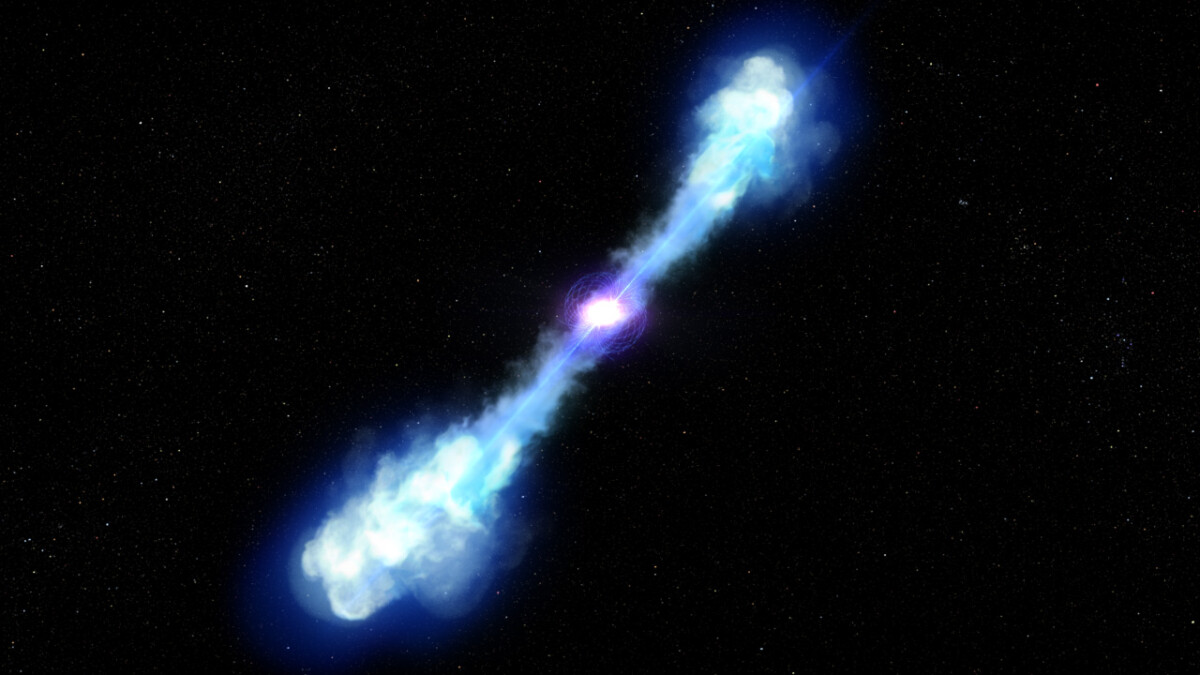Scientists have observed the brightest kilonova candidate ever, and it turns everything we thought we knew about colliding neutron stars upside down.
In the middle of this year, researchers detected a pretty remarkable flash of light. The short gamma-ray burst, dubbed GRB 200522A, traveled some 5.47 billion kilometers across the Universe before being captured by telescopes here on Earth. A team of researchers then came to a bizarre discovery. The gamma-ray burst was accompanied by a very bright kilonova; the brightest kilonova candidate ever observed. And that turns everything we thought we knew about colliding neutron stars upside down.
Gamma bursts and neutron stars
Just a step back. Because first, let’s start with how gamma bursts are created exactly. Gamma bursts are the most energetic phenomena in the universe. They are really nothing more than violent bursts of high-energy gamma rays that last from a few milliseconds to a few minutes. Scientists have long suspected that these short gamma-ray bursts are caused by colliding neutron stars; stars of extremely high density, which form when a star with a mass eight to thirty times that of our sun explodes and turns into a supernova. When these neutron star collisions occur, scientists expect to observe a kilonova. These are, as it were, the ‘shards’ that arose during the collision. You have to think of heavy elements – such as gold, platinum and uranium – that are thrown away. The prevailing theory is that when two neutron stars collide, a black hole will eventually form.
Hubble
In the current study, the researchers analyzed the short gamma-ray burst GRB 200522A across the entire electromagnetic spectrum using various telescopes, including the Hubble Space Telescope; from radio to X-rays. And this led to some of the most detailed – and mind-boggling – observations ever made for extreme phenomena like this. “With Hubble, we can look for infrared emissions that result from the formation of heavy elements – such as gold, platinum and uranium – that are formed during a collision of neutron stars,” explains researcher Edo Berger. “Surprisingly, we found much brighter infrared emissions than we ever expected.” The infrared emission detected by Hubble was ten times brighter than predicted.
Kilonova
This means that the researchers have spotted an incredibly bright kilonova here: the brightest kilonova candidate ever. And that calls into question all existing theories about what happens in the aftermath of a gamma-ray burst. “These observations do not fit the traditional explanations for short gamma-ray bursts,” said researcher Wen-fai Fong. “It just doesn’t make sense. The infrared emissions we found with Hubble were much too bright. We are actually trying to put all the puzzle pieces of this gamma-ray burst together, but one puzzle piece does not fit. ”
Black hole
The researchers are now coming up with several theories to explain the unusual brightness detected by Hubble. And one of them is very controversial. Because according to the researchers, it could just be that colliding neutron stars may not produce black holes. Berger takes us into his thoughts. “What is left behind in such a collision?” he wonders aloud. “A heavier neutron star? A black hole? The fact that we see this bright infrared emission shows that short gamma bursts are indeed formed by collisions between neutron stars. But surprisingly, it could well be that such a collision may not result in the creation of a black hole, but rather a magnetar is formed. ” So the findings point to the possibility that when neutron stars collide, a massive, highly magnetized neutron star is born; called a magnetar. And so it could just be that this magnetar provided the extra perceived energy that made us detect the brightest kilonova candidate ever on Earth.
More about magnetars
Magnetars are in fact very rare neutron stars – the super-compact remnants of exploded massive stars. A neutron star rotates quickly, has a strong magnetic field and a diameter of about 20 kilometers, but a mass larger than the sun. Magnetars are young neutron stars with an exceptionally powerful magnetic field. They are quite rare: only a few dozen of them have been discovered to date.
The last word has not yet been said on this. Upcoming observatories and telescopes will further elucidate observations of similar events and shed more light on what astronomers know about kilonovae. NASA’s upcoming James Webb telescope will be particularly suited for this. “Webb will revolutionize the study of similar phenomena,” Berger argues. “With its incredible infrared sensitivity, it will not only be able to detect such emissions at even greater distances, but will also provide detailed spectroscopic information that will reveal the nature of the infrared emission.”
James Webb is the most powerful space telescope ever built. Astronomers hope it will provide more insight into the origin of the universe. It is also expected to play a major role in the search for extraterrestrial life; the telescope can sift through the atmosphere of exoplanets and search for signals of life. The telescope also investigates the still mysterious dark matter, the formation of stars and protoplanetary systems and the origin of life. his to-do list stand. James Webb is seen as the successor to the Hubble Space Telescope. This telescope was launched in 1990 and is still active. James Webb cannot expect such a long working life. The telescope is designed to conduct five to ten years of research and, ideally, will not last more than fifteen years.–
–
Keep amazed ✨
Receive the most beautiful space photos and interesting popular science articles every Friday. Get the free Scientias Magazine together with 50,000 others.


:quality(80)/cdn-kiosk-api.telegraaf.nl/b93f80d4-24b4-11eb-bf99-02c309bc01c1.jpg)